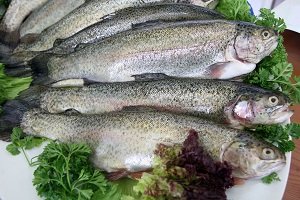
Food serves as a source of nutrients for humans and animals; however, when not properly processed or handled, they can become a reservoir of bacterial infections.
Bacterial foodborne infections result in approximately 420,000 deaths each year. In an effort to reduce the incidence of bacterial infections, antibiotics are the primary choice in the field of healthcare. Nevertheless, the decline in their effectiveness has led to improper use, resulting in bacterial resistance.
In pursuit of alternatives, many researchers have shifted their focus towards the use of so-called natural solutions such as essential oils, plant extracts, and fish oils.
Researchers from the University of Dschang, the University of Douala, the University of Bamenda, and the University of Buea evaluated the influence of two cooking methods (boiling and microwave cooking) on the antimicrobial activity of Nile tilapia oil (Oreochromis niloticus), as well as its interactions with certain conventional antibiotics.
Antimicrobial Activity of Fish Oil
Various studies have reported the antimicrobial activities of fish oils against bacteria responsible for foodborne diseases.
Studies have reported on the antimicrobial activity of polyunsaturated fatty acids extracted from the oils of two sardine species (Sardinella longiceps and Sardinella fimbriata), Chrysicthys nigrodigitatus, Hepsetus odoe, Lutjanus dentatus, and Fontitrygon margarita.
Lipid Content and Fatty Acid Composition of Tilapia Oil
According to the study results, oil yields from fresh, boiled, and microwave-cooked samples were obtained with yields of 1.25%, 4.44%, and 5.91%, respectively. Cooking appears to increase the extraction yield of O. niloticus oils.
In this regard, scientists reported differences in the oil produced based on the tilapia cooking methods.
“Twenty-one fatty acids (C12 to C22) were identified in the fresh O. niloticus oil, including saturated fatty acids (43.98%), monounsaturated fatty acids (28.86%), and polyunsaturated fatty acids (26.78%),” they reported.
Stay Always Informed
Join our communities to instantly receive the most important news, reports, and analysis from the aquaculture industry.
Based on the chemical composition of the polyunsaturated fatty acids, the researchers report the identification of eight fatty acids, with palmitic acid (33.95%) being the most abundant.
Minimum Inhibitory Concentrations
According to the study results, the oils extracted from O. niloticus, as a function of the applied cooking treatment, exhibited a variety of bacterial activities depending on the bacterial strain, with minimum inhibitory concentration values ranging between 32 and 256 mg/mL.
“The oil extracted from boiled tilapia was active against ten out of the fourteen bacterial strains analyzed, while the oils extracted from fresh and microwave-cooked tilapia samples were active against thirteen out of the fourteen bacterial strains analyzed,” they reported.
Furthermore, they describe that the highest antibacterial activity (32 mg/mL) was achieved with oils extracted from boiled, raw, and microwave-cooked samples against three, two, and one bacterial strain, respectively.
Antibiotic Interactions with Tilapia Oils
The study authors highlight that the combination of tilapia oils with antibiotics showed that oil extracted from tilapia fillets enhanced the activity of ciprofloxacin and chloramphenicol against E. coli, K. pneumoniae, and S. aureus.
Additionally, the researchers report that oil extracted from raw samples enhanced the activity of penicillin against E. coli and K. pneumoniae, and the activity of erythromycin against K. pneumoniae. This oil also revealed an antagonistic effect with Ciprofloxacin, Erythromycin, and Penicillin V against S. enterica serovar typhi.
On the other hand, the oil extracted from boiled tilapia samples enhanced the activity of ciprofloxacin against E. coli, K. pneumoniae, S. enterica serovar typhi, and S. aureus. It increased the activity of chloramphenicol against E. coli, K. pneumoniae, and S. aureus, the activity of penicillin V against E. coli and S. enterica serovar typhi, and the activity of erythromycin against K. pneumoniae. Moreover, this oil had an antagonistic effect with Penicillin V against K. pneumoniae and an indifferent effect towards Erythromycin on S. enterica serovar typhi and E. coli, as well as with Chloramphenicol and Penicillin V on S. enterica serovar typhi and S. aureus, respectively.
Lastly, the study results emphasize: “Oil extracted from microwave-cooked tilapia samples enhanced the activity of ciprofloxacin and penicillin against E. coli, K. pneumoniae, S. enterica serovar typhi, and S. aureus. It improved the activity of chloramphenicol against E. coli, S. enterica serovar typhi, S. aureus, and erythromycin against K. pneumoniae and S. enterica serovar typhi. Additionally, this oil had an indifferent effect with chloramphenicol on S. enterica serovar typhi and with erythromycin on S. enterica serovar typhi and E. coli.”
Conclusion
“Oils extracted from raw, boiled, and microwave-cooked O. niloticus samples exhibited overall antibacterial activity, but boiling tilapia is the most efficient process that preserves the antibacterial activity of tilapia oil,” they conclude.
They further highlight that tilapia oil enhances the activity of some antibiotics and reduces the activity of others.
Contact
Hilaire Macaire Womeni
Research Unit of Biochemistry of Medicinal Plants
Food Sciences and Nutrition, University of Dschang
P.O. Box 67, Dschang, Cameroon
Email: womeni@yahoo.fr
Referencia (acceso abierto)
Ronice Zokou, Fabrice Fabien Dongho Dongmo, Serge Cyrille Ndomou Houketchang, Gires Teboukeu Boungo, Hermann Arantes Kohole Foffe, Fabrice Tonfack Djikeng, Hervé Fabrice Njike Ngamga, Rosalie Anne Ngono Ngane, Jules-Roger Kuiate, Hilaire Macaire Womeni. 2023. Influence of cooking methods on Oreochromis niloticus (Tilapia) oils antibacterial activity, Food and Humanity, Volume 1, 2023, Pages 921-927, ISSN 2949-8244, https://doi.org/10.1016/j.foohum.2023.08.009.
Editor at the digital magazine AquaHoy. He holds a degree in Aquaculture Biology from the National University of Santa (UNS) and a Master’s degree in Science and Innovation Management from the Polytechnic University of Valencia, with postgraduate diplomas in Business Innovation and Innovation Management. He possesses extensive experience in the aquaculture and fisheries sector, having led the Fisheries Innovation Unit of the National Program for Innovation in Fisheries and Aquaculture (PNIPA). He has served as a senior consultant in technology watch, an innovation project formulator and advisor, and a lecturer at UNS. He is a member of the Peruvian College of Biologists and was recognized by the World Aquaculture Society (WAS) in 2016 for his contribution to aquaculture.




